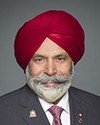Thank you for the opportunity to talk to you today.
I am primarily a researcher, and the author of four books and many, many articles focusing primarily on labour force issues. I worked for 10 years for the Communications, Energy and Paperworkers Union. This is the union that has now joined with the Canadian Auto Workers to form Unifor.
My work included research around the negotiation of benefits for workers, including drug plans. I've now been retired for four years and am a member of the Congress of Union Retirees of Canada, and I represent that retirees' organization on the Canadian Health Coalition.
The Canadian Health Coalition is an organization dedicated to the preservation and improvement of our national public health care. I wrote the CHC's recent policy document, called “A National Public Drug Plan for All”, which you either have or will be receiving.
Today I'm going to direct my comments to that part of the population referred to as being covered by work-based private plans, and I want to question the use of that term in some ways.
I think we all know that work-based plans cover the majority of the population. The figure I use in my report is 66% of the population. That comes from a document prepared by the pan-Canadian Pharmaceutical Alliance. I've seen other percentages, but all agree that the majority of the population are in private plans.
I want to make three points. The first is about who pays for these plans. The second is that work-based plans are very expensive. The third is that the quality of care provided is poor.
First, who pays? There is a tendency to talk about work-based drug plans as if they are paid for by employers, because it is employers, of course, that remit premium costs to insurance companies. However, this is not at all the case, because employees also pay for their drug plans, both directly and indirectly.
To give examples, nurses in Alberta, as several people at the table will know, pay 25% of the cost of their health insurance plan directly—that is, it is taken out of their wages. Nurses in Newfoundland pay 50% of the cost of their premiums directly. Retirees from your very own federal public service are currently seeing their contributions to their health plan, including for drugs, increase from 25% to 50% of the cost over a four-year period. Others pay in less direct ways, through lower wages or reductions in other benefits. Where unions are negotiating benefits and wages, there are often trade-offs.
Let's be clear: employees are paying for their drug plans.
The second point is that work-based plans are very expensive. First, there is the inability to negotiate drug prices. There are thousands and thousands of plans, so there is none of the negotiating power that is necessary to bargain for lower prices with pharmaceutical companies. Also, employers are not in the business of determining which drugs are more effective for the price than others, so these plans tend to cover all drugs, regardless of their effectiveness or their price. This is expensive.
Money is also wasted in the administration of these many thousands of different plans. Each plan has its own set of limits, its requirements, and its coverage rules. Every individual prescription must be checked against the plan covering that person. Insurance companies must also analyze costs, set premiums, discuss premium increases every year or two years with employers, and search for new business. Most insurance companies are also in business to make a profit—not unreasonably—but this is not the case in public drug plans. All this costs additional money.
The Quebec drug plan, the RAMQ, compared the cost of administration of its public drug plan with the cost of private health plans. Administrative costs were 2.9% in the Quebec public drug plan, but five times that amount in private plans, at 14.6%. Other studies have suggested much larger differences than this. If we are talking about cost, public drug plans are less costly than private plans.
I want to talk about the quality of care that these expensive plans provide.
When we say that the majority of the population is covered by work-based plans, this is a questionable statement. We need to ask what kind of coverage they get, especially at such high costs. Among other things, the problems are that coverage is unfair and haphazard, that most plans don't provide anything like full coverage, that plans are getting worse as costs increase, and that benefit coverage is not secure. I'll talk briefly about each of those.
Which workers have work-based coverage? Public service workers are more likely to have coverage than the private sector. Full-time workers are more likely to have coverage than part-time workers. Unionized workers are more likely to have coverage than non-union workers. Men are more likely to have coverage than women. Older workers are more likely to have coverage than younger workers. Please note that none of this bears any relationship to medical needs. It just depends on where you work and the nature of your drug plan. This is a haphazard and unfair way to provide health care to the population.
Most plans do not provide anything like full coverage. An Ontario study by Mercer for the Ontario Chamber of Commerce found that 38% of private employers with drug plans cover 100% of the costs of the drugs. The other 62% are providing just a percentage of the drug costs, which might be 80%, 70%, or 60% of the cost. This means that at the pharmacy counter, the employee must pay anywhere from 10% to 40% of the cost of the drug. It's important to note that this bears no relationship whatsoever to a person's capacity to pay these amounts. In fact, I would argue that workers who have been able to negotiate better drug plans and better coverage are often the workers who have better jobs and better incomes anyway.
There is increasing pressure on these plans as costs rise. This means both employees paying more and reductions in the coverage provided. When I worked at the Communications, Energy and Paperworkers Union of Canada, we saw the introduction of flexible benefit plans, something which, in my opinion, simply should not be permitted. This is a plan whereby individual workers decide what level of drug coverage they will take and pay differential premiums according to the level that they decide upon. You may decide to take a lower level of coverage and pay less, or a higher level of coverage and pay more. I think you can see the dilemma that this creates. Essentially, you guess what you think your drug needs might be for the following two to three years, because that kind of plan normally ties you in for that period of time. Guessing the future health of your family should not be the basis for drug coverage.
I advised CEP unions to avoid flexible benefit plans, but they came in anyway, under pressure from the rising cost of premiums transferred through employers and pressed on employees.
I want to talk about how secure our work-based plans are for those that they cover. The words “work-based” really say it all. If you change jobs or are laid off, you will lose your drug plan. Over the 10 years that I worked for the CEP, 30,000 paperworkers were laid off from their jobs. Due to a drop in demand for newsprint and the rising value of the Canadian dollar, many mills closed entirely, and others cut back substantially. Each one of those 30,000 workers lost their drug plan, and it was not only the workers but also their families, their spouses, and their children.
Let's not forget that at every negotiation, every two to three years, your drug plan may be up for changes. For workers without unions, your drug plan may be changed at any time.
I have a couple of final comments.
In my experience, employers want out from dealing with drug plans for employees. They wonder, as I do, why employers who are running businesses making paper or automobiles, or employers who are managing municipal and provincial public services, are making decisions about the provision of prescription drugs.
Why do we have this absurd situation in which employers, and in some cases unions, are determining health issues around prescription drugs? Would this not be better in the hands of medical professionals and medical researchers?
In the presentation that you heard by Marie-Claude Prémont, she explained with great clarity the mistake made by Quebec in institutionalizing work-based plans and requiring workers to participate in them. The spiralling cost of this decision should surely make us reflect on the successes of universal public systems in other countries at controlling costs versus the unsustainability of the Quebec system.
To summarize, work-based plans are a failure. They are expensive, inequitable, inadequate, and insecure. They are a major part of the problem; they are not part of the solution.
Thank you.











